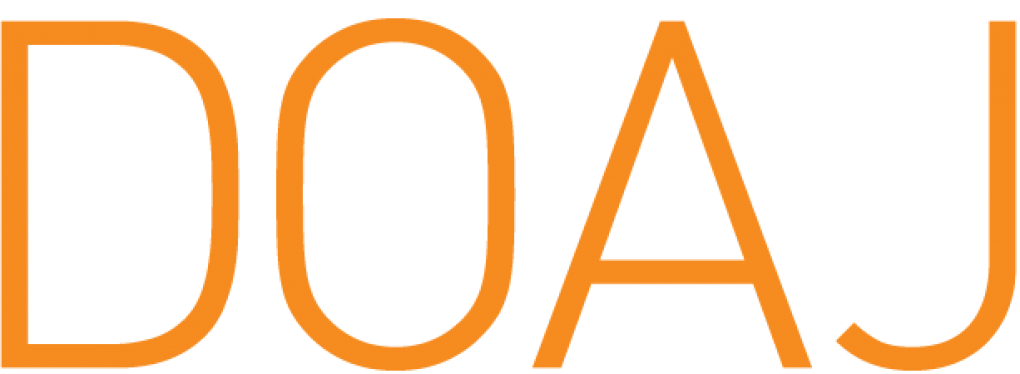##article.references##
1. Aniket, K. (2018). “Solow-Swan growth model and the fortunes of the commons.”Faculty of Built Environment University College London, MPRA (Munich Personal RePEc Archive. https://discovery.ucl.ac.uk/10052422/1/MPRA_paper_87844.pdf
2. Benn, S., & Benjamin D. R. (2022). “How the Fed Bond Binge Predictably Stoked Inflation,”Blog Post-July 14, 2022) from Greenberg Center for Geo-economic Studies, Graphics, and Renewing America https://www.cfr.org/blog/how-fed-bond-binge-predictably-stoked-inflation
3. Bernanke, Ben. S. (2017). "Monetary Policy for a New Era," paper prepared for "Rethinking Macroeconomic Policy," a conference held at the Peterson Institute for International Economics, Washington, October 12. https://www.elibrary.imf.org/doc/IMF081/25350-9781484376799/25350-9781484376799/Other_formats/Source_PDF/25350-9781484377192.pdf
4. Bhattarai, S., G. B. Eggertsson, and B. Gafarov. (2015). “Time Consistency and the Duration of Government Debt: A Signalling Theory of Quantitative Easing.” NBER Working Paper No. 21336 https://www.nber.org/system/files/working_papers/w21336/w21336.pdf
5. Campbell, J. R., C. L. Evans, J. D. M. Fisher, and A. Justiniano. (2012). “Macroeconomic Effects of Federal Reserve Forward Guidance.” Brookings Papers on Economic Activity 43 (1, spring): 1–80. https://econpapers.repec.org/RePEc:fip:fedhwp:wp-2012-03
6. Centre for European Policy Studies, CEPS. (2013). “The Global Economy in 2030: Trends and Strategies for Europe.” Edited by Daniel Gros and Cinzia Alcidi ISBN: 978-92- 79-29721-2 / Catalogue number: NJ-30-13-614-EN-https://espas.secure.europarl.europa.eu/orbis/sites/default/files /generated/document/en/The%20Global%20Economy%20in%202030.pdf
7. Eggertsson, G.B. (2003). "How to Fight Deflation in a Liquidity Trap: Committing to Being Irresponsible" (PDF). IMF (Working Paper. 1 March, https://www.imf.org/external/pubs/ft/wp/2003/ wp0364.pdf
8. Guerrini, L. (2006). “The Solow-Swan Model with a Bounded Population Growth Rate,” Journal of Mathematical Economics 42 (1), 14 – 21. "How to Fight Deflation in a Liquidity Trap: Committing to Being Irresponsible"
9. Greenberg Center for Geoeconomic Studies. (2022). “QE and Inflation: The FT Responds to Us, and We to Them.” Council on Foreign Relations and Geographics https://www.cfr.org/
10. Hakan, Y. (2022).” COVID-19 and Monetary policy with zero bounds: A cross-country investigation.” Finance Research Letters, 44, 102103. https://www.sciencedirect.com/science/article/pii/S1544612 321001847
11. Hamilton, J.D. and Wu, J.C. (2012). “The effectiveness of alternative monetary policy tools in a zero lower bound environment”, Journal of Money, Credit, and Banking, vol. 44(Supplement), pp. 3–46. https://onlinelibrary.wiley.com/doi/abs/10.1111/j.1538-4616.2011.00477.x
12. Hernández, R. A., & Hernandez, R. A. (2003). “Neoclassical and Endogenous Growth Models: Theory and Practice.” Warwick University https://link.springer.com/10.1007/978-3-319-71058-7_90-1
13. International Monetary Fund, IMF. (2022). “Global Economic Growth Slows Amid Gloomy and More Uncertain Outlook,” IMF Blog, July 26, 2022, by Pierre-Olivier Gourinchas. https://www.imf.org/en
/Blogs/Articles/2022/07/26/blog-weo-update-july-2022
14. IFS Global Economic Prospects. (2022). “Global Economic Outlook: Heading for a Fall?” https://ifs.org.uk/publications/global-economic-outlook-heading-fall
15. Jongrim, H., et al. (2022). “From Low to High Inflation: Implications for Emerging Market and Developing Economies.” (April 4, 2022).SSRN: https://ssrn.com/abstract=4074459 or http://dx.doi, .org/10.2139/ssrn.4074459
16. Jongrim, H., et al. (2022). “Today’s global economy is eerily similar to the 1970s, but governments can still escape a stagflation episode.” Brookings. https://www.brookings.edu/blog/future-development/2022/07/01/todays-global-economy-is-eerily-similar-to-the-1970s-
17. Kiley, M., and Roberts, J. (2017). “Monetary Policy in a Low-Interest Rate World.” Brookings Papers on Economic Activity, 48, 1 (spring), 317-396
18. KPMG. (2022). “KPMG GLOBAL ECONOMIC OUTLOOK-April 2022” https://assets.kpmg/content/dam/kpmg/uk/pdf/2022/04/global-economic-outlook-april-2022-brochure.pdf
19. Maarten, V. R and Jakob D.H. (2017). "Will helicopter money be spent? New evidence - De Nederlandsche Bank". https://web.archive.org/web/20200217130321/https://www.dnb.nl/en/home/
index.jsp
20. Mckinsey and Company (2022). “Economic conditions outlook, June, September 2022” McKinsey https://www.mckinsey.com/~/media/mckinsey/business%20functions/strategy%20and%2202022/economic-conditions-outlook-june-2022.pdfhttps://www.mckinsey.com/capabilities/strategy-and-corporate-finance/our-insights/economic-conditions-outlook-2022
21. Petersen institute for International Economics (PIIE) PIIE. (2022). “Downgrades global, US economic outlook-April 2022” PIIE https://www.piie.com/newsroom/press-releases/piie-downgrades-global-us-economic-outlook
22. Sheffrin, S. M. (1997). “Rational Expectations”. 2nd ed. Cambridge: Symposium: “The Natural Rate of Unemployment.” Journal of Economic Perspectives 11, no. 1 (1997): 3–108. https://academic.oup. com/book/2448/chapter/142711683
23. Robert W. Dimand & Barbara J. Spencer. (2008). " Trevor Swan and the Neoclassical Growth Model " History of Political Economy, Duke University Press, vol. 41(5), pages 107-126 https://www.nber.org
/papers/w13950
24. Conventional Monetary Policy Substitutable?” (September 27, 2019.https://ssrn.com/abstract=3506322 or http://dx.doi.org/10.2139/ssrn.3506322
25. Statistica.com (2022). “Global Annual Inflation Rate data: 2000-2027 with Forecasts until 2027.” https://www.statista.com/statistics/256598/global-inflation-rate-compared-to-previous-year/
26. The Economist, (2021) has the pandemic shown inflation to be a fiscal phenomenon? 18th December2021. https://www.economist.com/finance-and-economics/2021/12/18/has-the-pandemic-shown-inflation-to-be-a-fiscal-phenomenon
27. The Financial Times, November. (2020). “IMF forecasts ‘very painful’ outlook for the global economy.” https://www.ft.com/global-economy
28. The US Bureau of Labor Statistics accessed November 25, (2022) https://www.dol.gov/general/topic/statistics/inflation
29. The World Bank’s Global Economic Prospects. (2022). “The World Bank, 2022 Stagflation Risk Rises Amid Sharp Slowdown in Growth.” Press Release June 7, 2022 https://www.Worldbank.Org/En/ News/Press-Release/2022/06/07/Stagflation-Risk-Rises-Amid-Sharp-Slowdown-In-Growth-Energy-Markets






